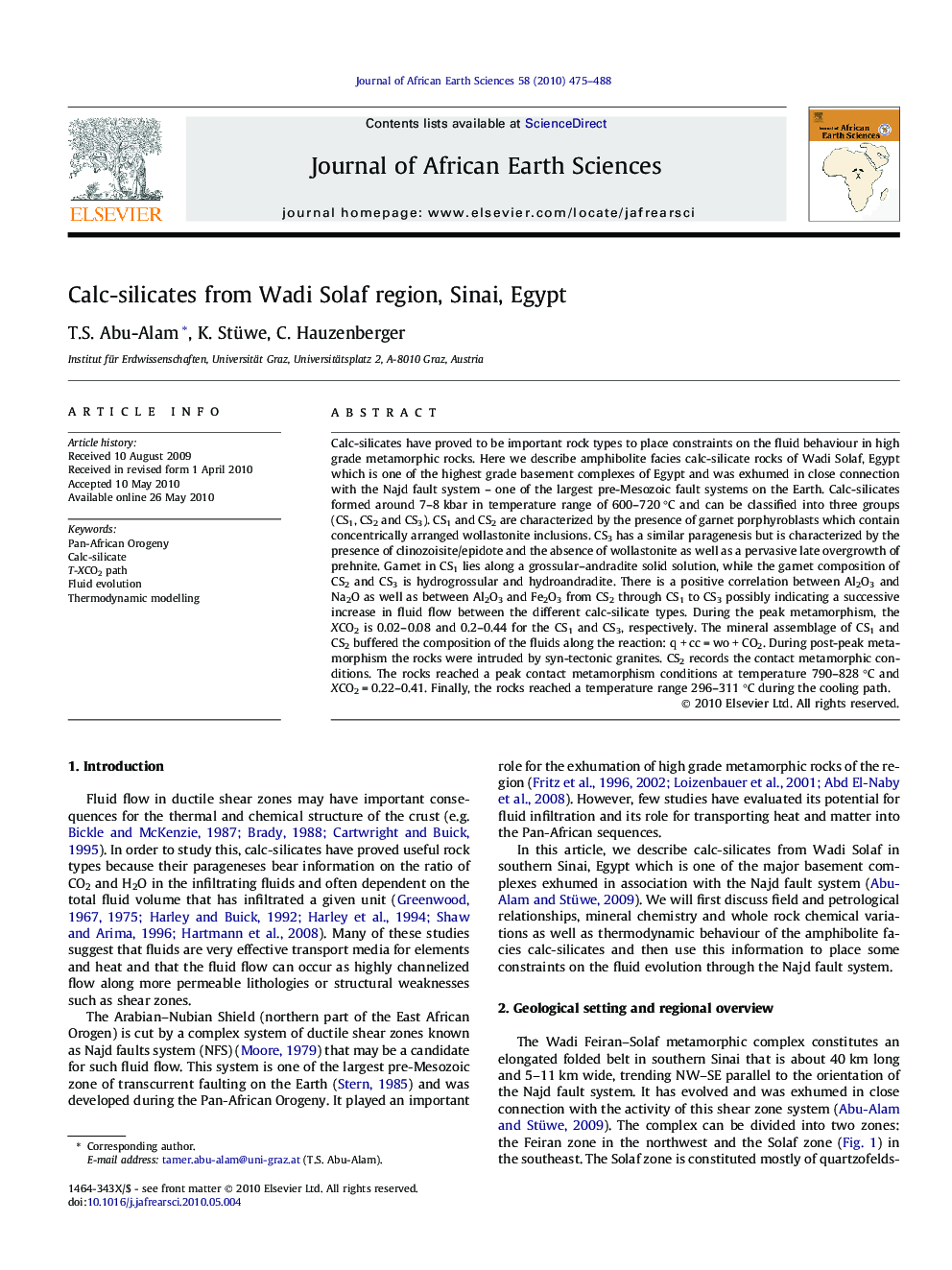| Article ID | Journal | Published Year | Pages | File Type |
|---|---|---|---|---|
| 4729282 | Journal of African Earth Sciences | 2010 | 14 Pages |
Calc-silicates have proved to be important rock types to place constraints on the fluid behaviour in high grade metamorphic rocks. Here we describe amphibolite facies calc-silicate rocks of Wadi Solaf, Egypt which is one of the highest grade basement complexes of Egypt and was exhumed in close connection with the Najd fault system – one of the largest pre-Mesozoic fault systems on the Earth. Calc-silicates formed around 7–8 kbar in temperature range of 600–720 °C and can be classified into three groups (CS1, CS2 and CS3). CS1 and CS2 are characterized by the presence of garnet porphyroblasts which contain concentrically arranged wollastonite inclusions. CS3 has a similar paragenesis but is characterized by the presence of clinozoisite/epidote and the absence of wollastonite as well as a pervasive late overgrowth of prehnite. Garnet in CS1 lies along a grossular–andradite solid solution, while the garnet composition of CS2 and CS3 is hydrogrossular and hydroandradite. There is a positive correlation between Al2O3 and Na2O as well as between Al2O3 and Fe2O3 from CS2 through CS1 to CS3 possibly indicating a successive increase in fluid flow between the different calc-silicate types. During the peak metamorphism, the XCO2 is 0.02–0.08 and 0.2–0.44 for the CS1 and CS3, respectively. The mineral assemblage of CS1 and CS2 buffered the composition of the fluids along the reaction: q + cc = wo + CO2. During post-peak metamorphism the rocks were intruded by syn-tectonic granites. CS2 records the contact metamorphic conditions. The rocks reached a peak contact metamorphism conditions at temperature 790–828 °C and XCO2 = 0.22–0.41. Finally, the rocks reached a temperature range 296–311 °C during the cooling path.
